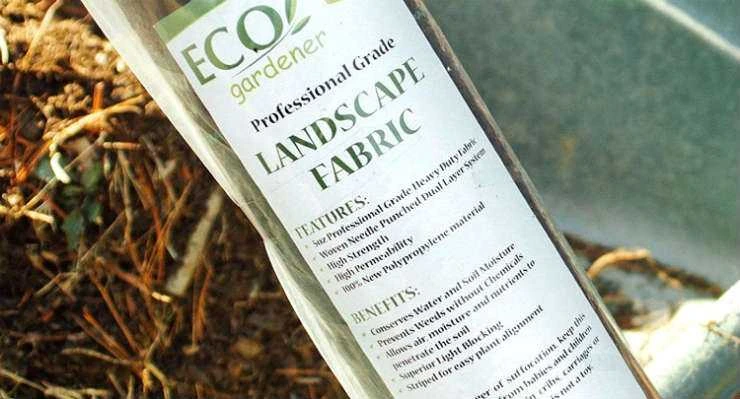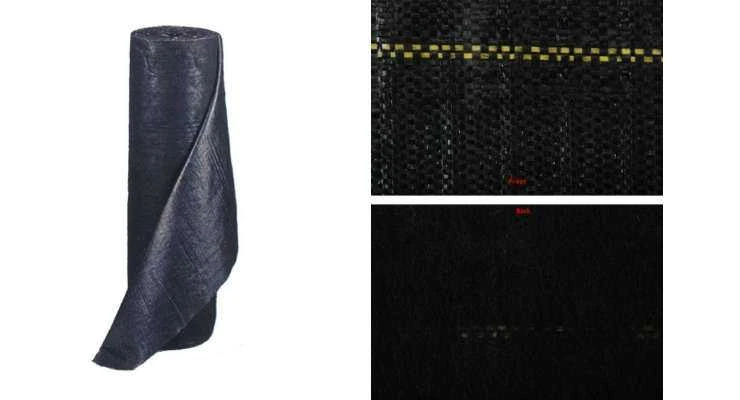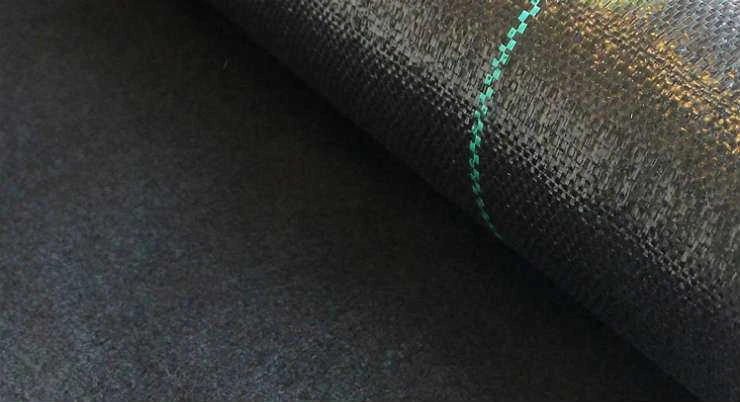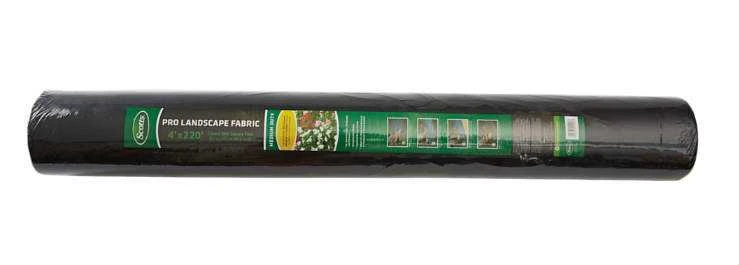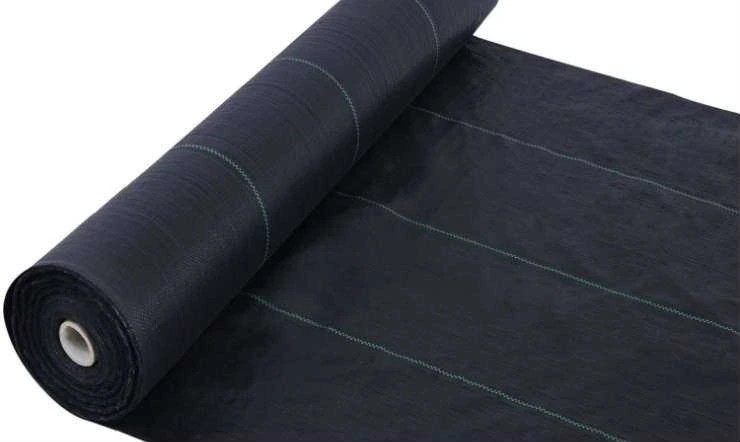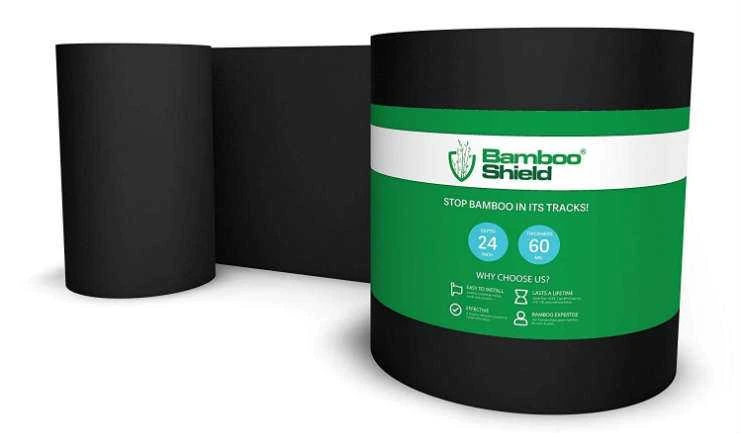Landscaping is a favorite way for gardeners to channel their creative energy into a beautiful work of art. After hours of planning, digging, planting, and mulching, no one wants unsightly and destructive weeds pushing their way into the landscape bed. Weed barriers are a landscaper’s best friend. Plastic and fabric weed barriers are available to help reduce weeds and retain moisture.
Since both types of barriers have advantages and disadvantages, it is important to consider what project it will be used for. Also worth considering how long it will need to stay in place when making the right selection.
Best Weed Barrier Reviews
Proper weed barriers are essential to the attractiveness and vitality of any well-designed landscaping slot. There are many fabric and plastic options available for purchase, each offering different benefits and advantages.
We have rounded up some of the best products on Amazon to review to help buyers make a well-informed decision when selecting the right weed barrier.
DeWitt P3 Pro 5 Weed Barrier Fabric
The DeWitt P3 Pro 5 Fabric Weed Barrier is available online for under $80 with the added option of free shipping. It is advertised as the heaviest weight landscape fabric.
The DeWitt P3 is manufactured with woven needle punch polypropylene fabric and may be an excellent way to retain and conserve soil moisture.
This product is hydrophilic treated, allowing it to properly ventilate the soil and roots, while also allowing air and nutrients to pass through. The DeWitt P3 is black on the reverse side, as well, which allows for extra light blockage.
This product also works great for lining the ground in raised garden beds and consumers report that it maintains its durability for several years.
Remove grass and till 2 to 3 inches of dirt before laying the weed barrier. Some consumers also report that it works well as a water barrier under patios and around pools.
This product features stripes placed 12 inches apart to help with plant spacing. One side is fabric and the other side is made of plastic.
Even though it is a good idea to add mulch when used for landscaping purposes, this roll can withstand up to 10 years of direct sunlight and does not have to be covered for its protection.
No harmful chemicals or herbicides are used in the DeWitt P3 weed barrier, so it does not harm the soil or any other living organisms, such as earthworms.
Also worth checking out the big brother by DeWitt.
Best Heavy Duty Landscape Fabric – DeWitt P5 Pro 5 Weed Barrier Fabric
The DeWitt P5 Pro 5 Weed Barrier measures 5 feet by 250 feet and is a great option for bigger landscape beds.
This heavy duty weed barrier product is not completely fabric – it does contain some plastic. It is entirely opaque to prevent photosynthesis and seed germination of weeds.
This is a 5-ounce woven fabric, needle-punched material for extra durability, and the manufacturer offers a 5-year guarantee against UV deterioration. The DeWitt P5 is popular for its heavy-duty feel and tightly woven material.
The material is puncture resistant, despite the fact that it is easy to handle and cut.
Many consumers report that the DeWitt P5 is excellent at retaining moisture, even in drought conditions.
As with most fabric and plastic weed barriers, it works best when a couple of inches of mulch are added to the top. This product also features stripes located 12 inches apart to help with appropriate plant spacing. If using staples to keep down the edges, be sure to space them 12 to 18 inches apart.
Best Landscape Fabric – Premium Pro Garden Landscape Fabric by ECOgardener
The Premium Pro Garden Weed Barrier Landscape Fabric by ECOgardener is a durable and heavy-duty weed-blocking gardening mat. This product is advertised as Eco-friendly.
Its smaller size makes it easier to manage during installation. It is advertised as having the ability to block weeds while still allowing light and moisture to pass through.
Many consumers report that the Premium 5-ounce Pro Garden Fabric lasts for several seasons when properly installed. The manufacturer offers a 100% satisfaction money-back guarantee for 30 days after purchase.
The smaller size is cost-effective and easy to manage, but various larger sizes are also available at different price points.
Many consumers report that, in addition to landscaping projects, the Premium 5-ounce ProGarden Fabric is also sturdy enough to use as a barrier under patios and decks and can withstand foot traffic.
However, some consumers report that it is so heavy-duty that water does not penetrate the barrier easily, which can cause water to puddle up. It does allow moisture through, it will just take a little longer for it to drain into the ground because of the plastic and the fabric’s thickness.
Best Budget Landscape Fabrics for Flower Beds – Scotts 25-Year Pro Fabric
The Scotts 25 Year Pro Fabric is a great option for the money-minded savvy shopper. This 3 by 150-feet fabric weed barrier roll is available around the $20 mark.
The Scotts Weed Barrier is a great option for flower beds, lining walkways, patios, and retaining walls. Its material helps to reduce soil erosion, as well.
Many consumers report that it maintains its durability for several years and works well with landscape fabric staples. Some customers also report that the sturdy material is so water-resistant that it can cause water to puddle up on the surface. Others report that it will absorb water, it just does so slowly.
At around the $20 mark with a 25-year advertised guarantee, this product is, perhaps, the most economical option available.
Best Wowen Fabrics for Vegetable Gardens – Agfabric Landscape Ground Cover Heavy Duty Woven Weed Barrier
The AgFabric Landsape Ground Cover Woven Weed Barrier is made with an environmentally safe fabric that controls weed production without the use of harmful chemicals and herbicides. The material is also biodegradable after some years.
This heavy duty landscape fabric comes in a 5 by 100-foot roll (other sizes are offered of course) and is available online with the option of free shipping.
Due to the woven landscape fabric material, the water can seep into the soil. This product offers soil erosion control and can protect the soil without starving it of water or nutrients. It reportedly holds up well under even intense UV exposure over a period of several years.
The Agfabric weed barrier also features a rows line design, making it easy to keep rows of plants or vegetables straight during planting. This landscape ground cover is made with 3.0-ounce high strength PP woven landscape fabric to increase its durability and effectiveness.
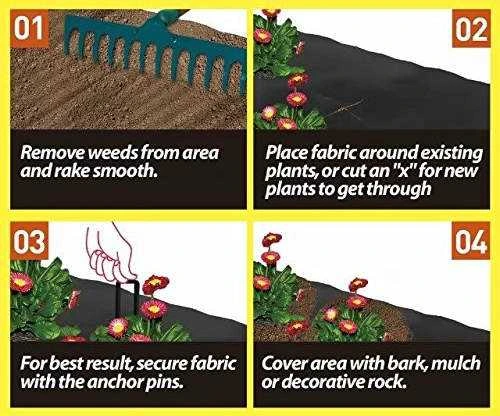
Although primarily made of fabric, this product does contain some PP and PE plastic materials, making it a good option for weed control.
Some consumers report that the edges of the cover can roll up after cutting them during installation. To avoid this inconvenience, try using landscaping staples or pins.
It has a tendency to fray on the sides which can be an inconvenience.
Although it is a good idea to remove any existing weeds from the area before installing weed barriers, some consumers report that the Agfabric can smother any existing weeds if it is properly installed on top of them.
It is also a good practice to cover any weed barrier at least two inches of mulch, but some consumers report that the Agfabric will still last up to 10 years, even when uncovered.
Bamboo Shield Root Barrier / Water Barrier
The Bamboo Shield Bamboo Root and Water Barrier is available in lengths from 15 feet to 225 feet online and start at just around $40 with the option of free shipping.
This unique product controls the growth of bamboo by controlling its root expansion, limiting bamboos ability to spread in unwanted areas. It is manufactured in the USA using High Density Polyethylene.
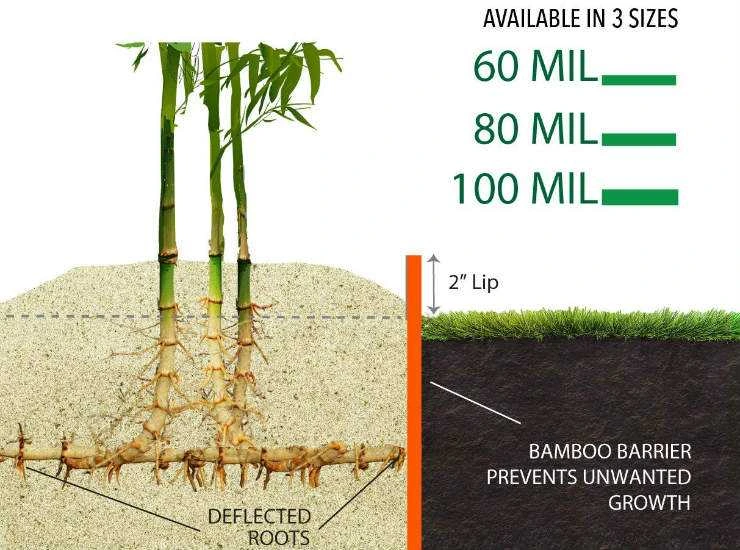
This bamboo shield is 60 millimeters thick and can withstand punctures from forces up to 130 pounds. As opposed to metal bamboo shields, this roll will not rust, is more environmentally friendly, and is easy to install.
The Bamboo Shield product does include easy-to-follow instructions and does require some digging. To reach the base of the bamboo’s root, dig a trench at least 24 inches deep for the length that the barrier will be unrolled. When digging the trench, try using a garden tiller to soften the ground and make it easier to shovel.
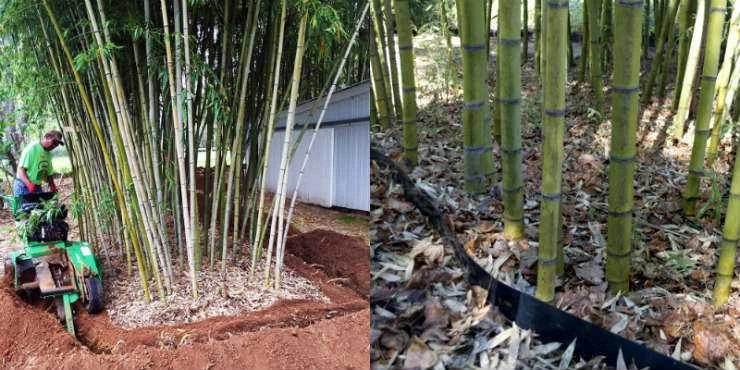
To provide better root control, the side that faces the ground is chrome rolled. This product advertises that it will prevent the spread of bamboo for a lifetime when properly installed. Be sure to lay the barrier horizontally. Some consumers report that the edges tend to roll up during installation. Re-rolling it in the opposite direction before installing the barrier can help it stay flat and easier to manage.
The Bamboo Shield is reported to be a permanent solution to bamboo expansion when installed properly. Brackets can be used at the edges, or simply overlap the ends by 10 to 12 inches. Leaving any gaps in the barrier will allow roots to squeeze in and thwart the purpose of installing a barrier in the first place.
Additional Products to Consider for Weed Barrier Fabrics
Best Landscape Fabric Staples
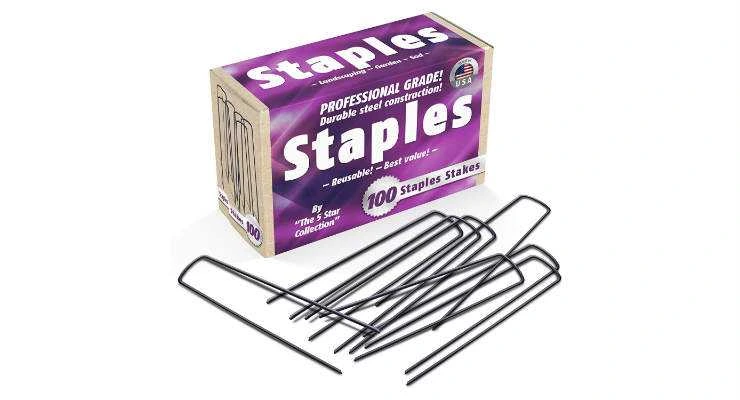
The 5 Star Collection Heavy Duty Galvanized Staples are made of 11 gauge steel. They are professional-grade anchor stapes that help keep fabric weed barriers and hoses in their proper place. These staples are 6-inches long, allowing them to securely fasten barriers into the ground.
Be aware that the chiseled points are extremely sharp. Use extra caution when using these staples by wearing protective eyewear and gloves. Keep them away from children and pets.
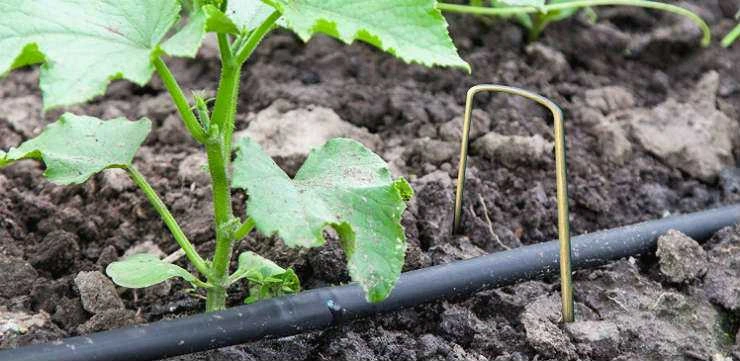
The galvanized staples can also be used with weed mats, irrigation tubing, and holiday decorations in addition to securing fabric weed barriers.
Some consumers report that the staples can bend when being pushed into the ground and that their measurements are not always true to size.
Overall, most customers are happy with the quality of these staples, reporting that they are easy to use and serve their purpose of securing fabric weed barriers to the ground.
How Landscape and Fabric Barriers Work
Landscaping fabrics are useful in maintaining vibrant, beautiful flower beds and landscaping. They stabilize soil, keep moisture, and help minimize weed growth.
These barriers are usually made of fabric or plastic materials. They are available in large rolls that can cover several feet of ground.
The type of material used for the weed barrier will determine its weight, durability and permeability.
Depending on whether it is plastic, fabric, or a blend of both, the barrier can also act as a separation layer, a protective water barrier under porches and decks, or as a reinforcing layer under a driveway or sidewalk.
Plastic barriers are not well-suited for landscaping. Although barriers can prevent weeds, they can also suffocate the soil.
When living organisms are denied proper air flow, the soil suffers as well. Plastic sheets prevent both air and moisture from maintaining a delicate balance for preserving plant life.
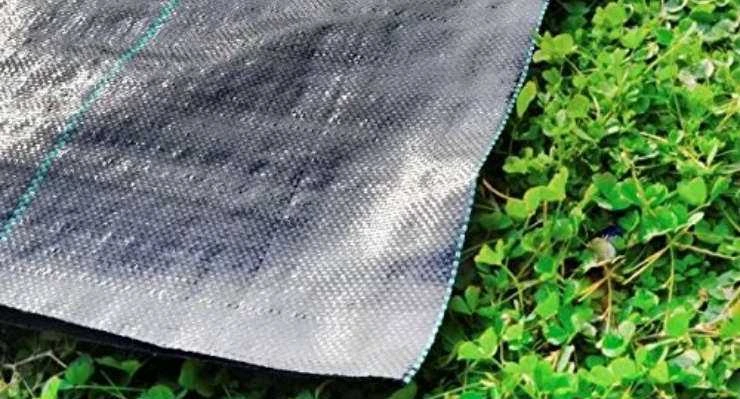
For flower beds landscaping, consider using a fabric weed barrier to help with moisture preservation and ventilation. Fabric barriers will still help reduce weed growth while still allowing the soil to breathe.
Fabric will let moisture in, while also keeping it in. This nourishes the soil and plant roots while aiding in water conservation.
Weed Barrier Landscape Fabric Advantages
Cost Effective
In landscaping projects, weed barriers have the advantages of being cheap and effective.
Compared to the plants, soil, fertilizer, and other materials that go into landscaping, weed barriers are an economical addition with overwhelming benefits, such as proper ventilation and moisture retention.
Prevents New Weed Growth
These weed barrier products prevent new weed growth by blocking sunlight and physically blocking airborne seeds to take root in the first place.
Less Chemicals
Less weeds means you will need much less weed killer herbicide, if you need any at all. You might argue that the plastic weed barriers are not environmentally friendly, which is true, so to address this concern, go for biodegradable fabrics.
What is the Best Weed Barrier Material – Plastic VS Fabric VS Natural
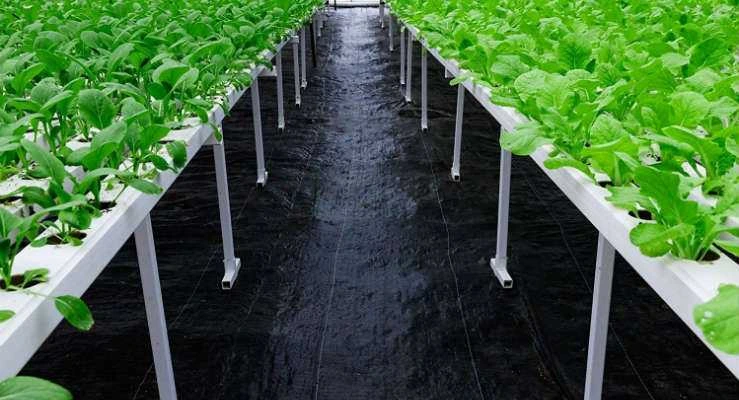
Plastic Weed Barriers
Plastic weed barriers have been around for a long time. Black plastic is the most effective at weed prevention since it smothers everything under it. Its disadvantage is that it can also suffocate plant roots and starve the soil. It may block moisture and water going through while potentially leaving puddles of water.
Plastic weed barriers can limit photosynthesis and gas exchange. They are also less environmentally friendly option.
Plastic will also break down when exposed to sunlight over time, so may not be a good option for permanent landscaping projects.
Plastic barriers will work better in annual beds that need to be re-planted every season.
Fabric Weed Barriers
Fabric weed barriers are highly regarded in the gardening world because of their longevity.
When properly installed, the best landscape fabric and barriers can last many years.
Fabric also allows better ventilation, allowing plants and soil to breathe.
Adding organic or stone mulch will enhance the fabric’s durability and effectiveness, as well.
Some weeds will still poke through , but not as many as there would be if a barrier was not present. And it is much less likely to damage soil or other plant growth.
Natural Weed Barriers
One alternative to plastic and fabric weed barriers is the natural materials gardeners have been using for centuries.
Mulch, moss, straw, and other items found in nature help cut down on weed growth.
To calculate the amount of mulch you may need, use our mulch and soil calculator.
Since they are completely biodegradable, once their compounds break down into the soil, the natural materials will also act as compost and put nutrients back into the soil.
Natural weed barriers do have to be replaced or topped up at least once a year. Although they can be used alone, when used on top of a fabric weed barrier it enhances weed prevention.
Choosing a Weed Barrier
When selecting the best weed barrier to use, consider what its purpose will be.
For barriers under driveways, patios or walkways, the longevity and moisture control that plastic offers may be best.
Plastic may also be considered along with natural materials for annual flower beds and landscaping projects that do not need to last several years.
Also consider the potentially detrimental effects some plastic barriers can have on the soil.
For larger landscapes that require more permanence, consider a fabric barrier coupled with quality mulch to enhance its longevity and effectiveness at air ventilation and moisture absorption.
How to Install Weed Barriers
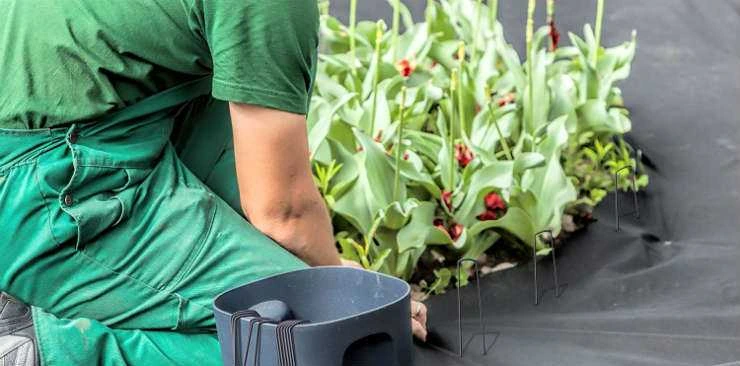
Step by Step Guide
Before laying down any type of weed barrier, first pull up any pre-existing weeds in the project area.
- Till the soil with a garden tiller or hoe and work in compost or fertilizer.
- Using a rake, smooth the dirt and pick up any sticks, rocks, or debris that may remain in the soil
- Unroll the weed barrier lengthwise on the gardening bed and cut it down to size using a sharp knife or scissors.
- Overlap any pieces at least 12 inches to keep weeds from poking through any openings.
- Cut slits in the fabric to allow room for existing plants or new additions.
- Fit the slit around the bottom stem of the plant.
- Smooth out the fabric, removing lumps or bunches in the barrier.
- Cover it with two inches of mulch.
- Be sure to add mulch around the plants without piling it too tightly around the stems.
Conclusion
Commercial weed barriers serve a great purpose for gardeners who want to keep their flower beds tidy and weed-free. When choosing the right fabric or plastic weed barrier, consider factors such as how long the landscaping will need to be in place or if it needs to be used for building purchases such lining walkways, patios or pools. Consider the advantages and disadvantages of each of these reviewed products to make the best selection for your home or garden.
